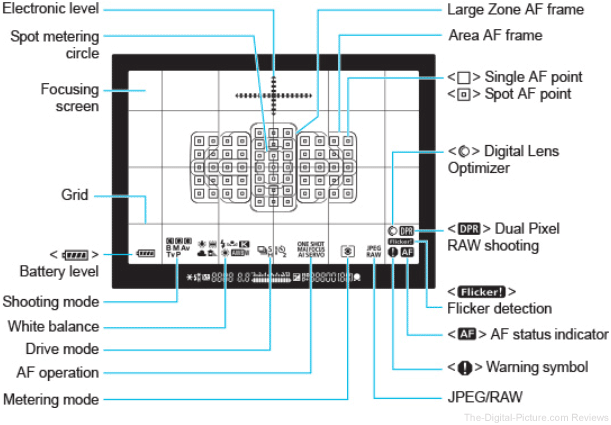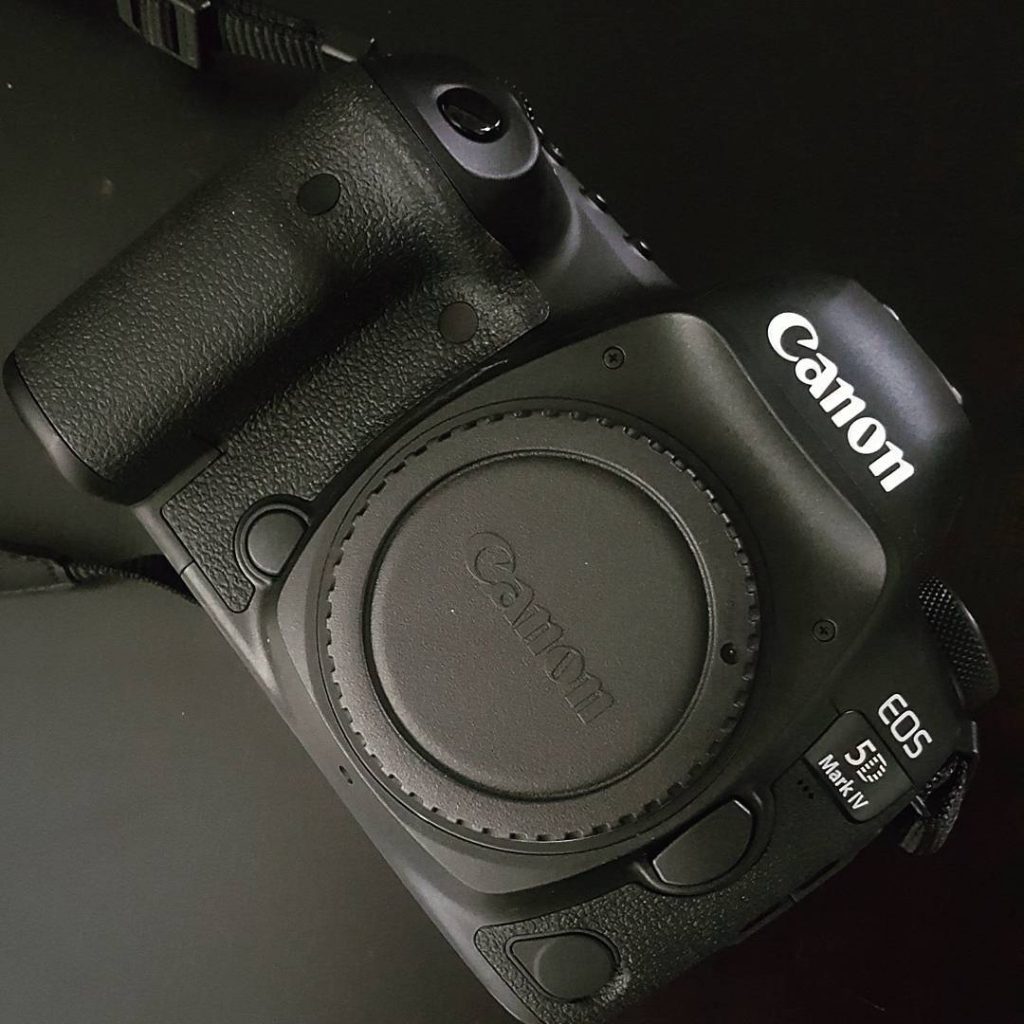Equipment
Lensrentals.com Reviews the Canon 5D Mark IV
Announced in the light of Photokina, came the continuation of the Canon 5d series with the latest from Canon, with the Canon 5d Mark IV. The announcement was met with mixed opinions, but like all camera announcements, there is no telling how great the system is until someone you trust gets their hands on the camera for themselves. Hopefully, here at Lensrentals.com, we’ve developed that relationship, and we’re here to test, and give a comprehensive review on the new flagship system from Canon – the Canon 5d Mark IV.

And before we get into the review, I want to mention that this review is broken into two pieces – photo and video. Since the release of the Canon 5d Mark II, Canon has been adding more and more video functionalities into the 5D series. The Canon 5D Mark IV is no exception, allowing for 4K video to be shot at 30fps. However, I specialize in photo far more than video, so I’ve gotten colleague and video tech for Lensrentals.com – Ryan Hill – to write a video portion of the review. These reviews are written independently, as not to skew each other’s opinions, and then welded together through the power of proofreading. So if there are any repeating mentions of features, be patient with us, as we’re just trying to get you the best opinion available on the new system.
Photo Review
As a photographer, the simple announcement of the Canon 5D Mark IV got me excited. This camera has been speculated for years and the Canon 5d Mark III, released in March 2012, was overdue for an update. With a new sensor, new autofocusing system, and something called Dual Pixel RAW, Canon has seemed to refresh their favorite line with a bunch of nice upgrades for the working photographer. So let’s just right into the features.
Features
The new camera comes with an extensive list of features that are new when compared to the Mark III. Most important is the 30mp sensor that is powered by a Digic 6+ processor, allowing for up to 7fps of shooting in both normal and silent mode. Additionally, the Canon 5D Mark IV has built-in GPS and Wifi, allowing you to geotag your images with precision, and enable you to wirelessly transfer the images to a computer, tablet or phone, to post while on the go. When testing the Wifi, I found that it worked great at an event, allowing for small jpeg previews to be sent to an iPad at pretty rapid pacing. While the tech isn’t quite there, I imagine tethering wirelessly on commercial shoots is only a few years away.
It also sports a new autofocus system, which is compared to the Canon 1DX Mark II’s system, which I found to be incredible. My experiences with the system weren’t as elaborate as tracking fast moving objects, though I have no doubts that the camera would handle it with ease. Perhaps this itself is the biggest improvement over the Canon 5d Mark III. With each new system, Canon has managed to improve the focusing system, and this focus system might be the best in camera systems today. With an autofocus system that works exceptionally at tracking for both photo and video, it’s hard to believe that in a few years, this system will likely be obsolete. Like all new innovative technologies – I can’t see how this can be improved, but perhaps that is why I’m a consumer and not an engineer.
And the biggest announcement in the features came in the form of Dual Pixel RAW, which allows you to micro focus your images after the fact. In practicality, it’s brilliant. How often have you found that one winner in your frames, only to see that you have some slight back focusing? That said, it’s all theory now, as Adobe and Capture One have not added the feature into their RAW software, so the feature isn’t enabled unless you’re using Canon’s gaudy software. So while I wasn’t able to test this feature (yet), I’m looking forward to seeing how it works when it becomes more readily available.
However, I really think the biggest improvements come in the unspoken features – that may not be revolutionary, but allow for some neat little tricks that help you shoot faster, and more efficiently. Here are a few of my favorites.
The Unspoken Features
Much to my surprise, the Canon 5D Mark IV comes with a bunch of additional features that have been overshadowed by the announcement of the focusing system and Dual Pixel RAW. And sure, I get it, focusing is more important – but the little features are what made me fall in love with the camera. What are those features, let us just go down a list —
1. The focus-feature button
It allows you to switch focusing types quickly (from single point to cross point, etc, etc.).

2. Hybrid-ish Viewfinder
The viewfinder allows you to add various pieces of information, from things as useless as battery power, to as useful as an electronic level built into the viewfinder.

3. An Actual Useful Touch Screen
The touchscreen allows for a bunch of new controls, allowing you to focus, select images, zoom, and more. Up until now, Canon’s touchscreens on DSLRs have been pretty functionless by most people’s standards.
4. Quieter operation
If you’re coming from the Mark III, you’ll find the 5D Mark IV to be quite a bit more quiet, with it’s new(er) mirror box design
However, there are some downfalls with the system as well. Most notably, is the lack of CFast card slot on the system – extending the life of the Compact Flash slot for another generation. Don’t get me wrong, I don’t want to switch to new memory cards either, but CFast is exceptionally better than Compact Flash at its current state. While Compact Flash is (currently) limited to around 100MB/sec (averaged), CFast achieves speeds five times as fast. While that may not be important to a camera that shoots 7fps, it can be a huge advantage to those who need to upload images to their computers quickly…and can really speed up the workflow for those in fast pace environments.
Video Review
I took a support call a couple of weeks ago that came to mind a few times while I was testing the 5D Mark IV. A relatively inexperienced customer (late high school or early college if I had to guess) called in for help putting together a 5D Mark III package. He was shooting a short film and needed a viewfinder, a top handle, and an XLR adapter. After getting the 5D Mark III in his cart, I recommended a Zacuto Z-Finder, a Wooden Quick Kit (just the top section), and Beachtek DXA-SLR Pro. He was ready to place the order before I interjected. “You know, you’ve created a Canon C100 here. If you’re willing to switch cameras, you’ll have a simpler setup, dual pixel autofocus, better battery life, and two card slots. Plus, it’ll be cheaper.” He’d never considered a dedicated video camera because his teachers had all told him that the only affordable way to shoot high-quality video with a cinematic look on a budget was to use a DSLR. Seven years ago, they would’ve been right. The 5D Mark II revolutionized the video market in ways that are still being felt today. Whole companies (including Lensrentals) sprang up to support amateur filmmakers who, all of a sudden, had a way to capture video with shallow depth of field and high dynamic range without pawning all their worldly possessions.
Now, though, we have a few more options. You no longer have to cobble together a Frankenstein’s monster of third-party accessories just to make a DSLR usable. Cameras like the Canon C100, Sony PXW-FS5, and Panasonic AF100, will give you video at least as good as what you can get from a DSLR (better in most cases), plus XLR inputs, physical audio controls, viewfinders, unlimited clip length, etc. In short, they’re designed with video in mind from the outset, rather than it being a feature tacked-on to a camera intended for stills. As a videographer, this leaves me wondering where exactly the 5D Mark IV fits in my workflow. Given the specs, under what circumstances would I reach for this particular camera over the myriad other options available?
About those specs: first of all, yes, you can shoot 4K (8-bit 4:2:2) with the 5D Mark IV. However, you’re limited to 30p or below. 1080 will give you up to 60p, and, frustratingly, 120p is limited to 720 resolution. Also frustrating is the total lack of 4K output over HDMI. 4K recording is limited to a 1.74 crop which, in addition to making reframing necessary when switching from stills to 4K video, introduces some very noticeable rolling shutter issues. Without scientific testing, I’d say the rolling shutter is nearly as bad as it is on the A7S, which is the camera I use in the office when I’m demonstrating what a bad rolling shutter looks like. The 5D IV also lacks some major features I’d expect out of any modern video camera: No peaking, no zebras, no focus magnification while recording, and no log profile. Hopefully, some of this can be fixed through firmware updates or by the good people at Magic Lantern, but your $3,500 camera shouldn’t have to be improved by volunteers accepting bitcoin donations. Finally, regarding usability, the menu structure just isn’t designed for video. As always, audio controls are too hidden, but there are smaller annoyances that snuck up on me. For instance, you initiate 120p recording by selecting an “Enable” button in the “Recording Settings” menu. You end high-speed recording by navigating to the same menu and selecting “Disable.” After disabling 120p, does the 5D return you to the recording setting you were using, say 4K 24p? Nope. It goes back to the default (1080, 60i) every time, necessitating another dive into the menu structure to change back to your chosen settings. This had me cursing under my breath multiple times while surrounded by children and Knights of Columbus at a fair.
There are things to like here, though or at least a thing. The autofocus performance, as in the C300 Mark II, is awesome, and I mean that in a literal sense. It inspires awe. The touch screen, rather than being the useless gimmick I was expecting, became my tool of choice for controlling focus. Accurate face tracking allowed me to just point at the person or thing (it seemed to work just as well on dachshund faces) I wanted to keep in focus, and then just re-frame as needed. It almost never hunted or lost track of subjects. The only downside I could find is that it doesn’t work during high-speed recording.
So, back to the initial question, under what circumstances would I choose this camera over everything else in the Lensrentals inventory? To answer that, I have to first admit that a lot of my criticism above is unfair. I can’t very well complain about a lack of good video features because this isn’t a video camera. Both the millions of other amateur filmmakers and I brought up on the 5D Mark II need to remember that. Video cameras have things like XLR inputs, internal ND filters, and menu structures designed for video work. What it is is a still photography camera and a fantastic one at that. I do almost all of my still photography on a 5D Mark III, and that’s where the 5D Mark IV will fit for me. If something comes up while I’m shooting stills that I think I’d like to take a quick video clip of, then I’ll be happy I can do it in 4K. If video functionality is a priority in any way, I will go with a camera designed for video, and I’d recommend you do the same.
Below is some sample footage I shot with the Mark IV this weekend. Since C-Log is, unfortunately, absent, I shot everything with Technicolor’s Cinestyle Profile, which is available for free here. Everything was left ungraded, including stuff I exposed imperfectly. Unless otherwise noted, the day footage was shot at 400 ISO, and the night footage was shot at 800 ISO. If you have any questions, feel free to let me know in the comments.
Build Quality
If you haven’t looked at it yet, look at Roger’s teardown of the Canon 5d Mark IV system. As shown by him, the weather sealing has been improved, and subtle changes have made the Canon 5D Mark IV and upgrade from the previous models. When holding, the system feels very similar to the Mark III, giving you a robust build in a comfortable form factor.
Price
The Canon 5D Mark IV is available for purchase at $3,500, and available for rental for about $125 for a weekend rental. This price is what we’ve come to expect from a pro-level DSLR body of this caliber.
Does it Meet Expectations?
Heads up, here comes a short rant. Upon the announcement of this camera, it was instantly met with some harsh critics on the feature list of the system. People want a camera that can shoot medium format quality images, with the speed of a Canon 1DX Mark II, and the video functionalities of a RED Weapon – and they want the price to sit under $3,000. Sure, this camera doesn’t have anything and may not have pushed the bounds of the industry, but the Canon 5D series has never been about being revolutionary in features, but being revolutionary in practicality. The 5D Mark II came with video functionality, which set it apart from the competition – but it wasn’t perfect. You were limited to manual focus, and here even further limited to framerates and resolution. The Mark III introduced an useable focusing system (I kid, I kid), but improved on everything the Mark II had to offer, without overreaching with unusual or groundbreaking features. The Mark IV has taken every feature of the Mark III and improved it a little bit. It may not be completely cutting-edge, but they made an incredibly loved and capable camera even better on every single metric. People need to stop expecting the industry to evolve faster than it can. It’s already moving fast, and the Canon 5D Mark IV keeps pace with every single competitor in the DSLR field. It’s feature-full and practical – maybe not as revolutionary as the Sony a7 was to the mirrorless world, but it will certainly be the most used camera in the industry within a years time.
What We Liked –
- Dual Pixel RAW Looks to be an Incredible Feature
- Lighting Fast Autofocusing for both Photo and Video
- Wifi and GPS work great and have a lot of functionality
- Image quality is great, and the additional resolution is a nice touch
What Could Be Improved –
- It’s still a photo camera with video functionality
- 4K is cropped to a 1.7x sensor
- Still missing key features found on 3rd parties (in body stabilization for one)
- No CFast slot (Compact Flash & SD Slots Only)
Summary
So is the Canon 5D Mark IV a worthy upgrade? Yes….yes it is. Canon managed to combine what we loved about the Canon 5d Mark III, and improved on it in every metric. The autofocus is better, the camera is faster, the video functionality has improved, the lowlight has been improved, and there are plenty of additional features to set it apart. The Canon 5d Mark IV is an exceptional camera and fixes a lot of practical issues I’ve had with previous models.
Zach Sutton & Ryan Hill
Author: Zach Sutton
I’m Zach and I’m the editor and a frequent writer here at Lensrentals.com. I’m also a commercial beauty photographer in Los Angeles, CA, and offer educational workshops on photography and lighting all over North America.
-
Doug Laurent
-
Jesse Lee
-
Juha Bly
-
Keith Reeder
-
Doug Laurent
-
Juha Bly
-
Doug Laurent
-
Juha Bly
-
Carl Eberhart
-
Carl Eberhart
-
Marcel van Leeuwen
-
Doug Laurent
-
keynut5
-
Doug Laurent
-
keynut5
-
Doug Laurent
-
Doug Laurent
-
Carl Eberhart
-
Carl Eberhart
-
Carl Eberhart
-
keynut5
-
Doug Laurent
-
keynut5
-
Marcel van Leeuwen
-
Marcel van Leeuwen
-
Doug Laurent
-
keynut5
-
Rick Murray
-
Scott
-
Doug Laurent



